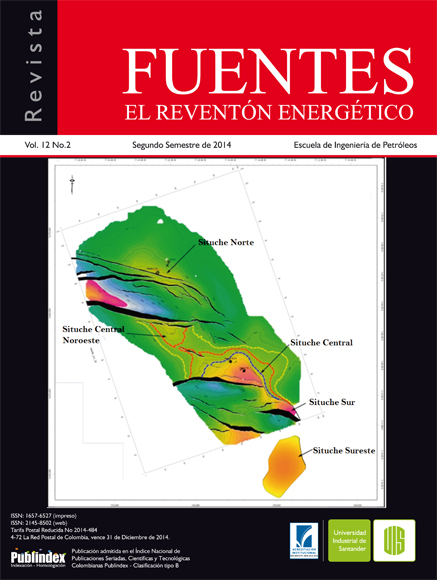OXIDACIÓN A ALTA TEMPERATURA DE UN ACERO ASTM A335 P 92 EN CONDICIONES ISOTERMICAS Y DE CICLADO TERMICO
Publicado 2015-06-05
Cómo citar
Resumen
RESUMEN
En este trabajo describe el comportamiento del acero ACERO ASTM A 335 P 92 bajo un proceso de oxidación isotérmica y cíclica en un rango de temperaturas entre 450 y 700ºC, en una atmósfera oxidante. Mediciones termogravimétricas mostraron que en condiciones isotérmicas la velocidad de crecimiento de los óxidos presentan un comportamiento de tipo parabólico en el rango de temperaturas de prueba. Para las pruebas de oxidación cíclica se observó en el intervalo entre 450 y 600ºC una cinética de tipo parabólica, mientras que a 450 y 500ºC el comportamiento cinético fue de tipo para-lineal. Después de comparar ambos tipos de ensayo, se deriva que la velocidad de oxidación en condiciones de temperatura cíclica fue mayor debido principalmente al choque térmico
al que fueron expuestas las capas de óxidos formados. Los resultados mostrados por SEM, para 650ºC y tiempo de exposición a 50h en el ensayo de oxidación isotérmico, presentan dos tipos de capas de óxido compuestas por la mezcla de óxidos de Cr y Fe, destacándose que la cantidad de Cr es mayor en la capa externa y la cantidad de Fe es mayor en la interna, mientras que a 700ºC y a un tiempo de exposición de 168 h, para el ensayo cíclico, la capa externa fue principalmente magnetita.
Palabras claves: Oxidación isotérmica, oxidación cíclica, acero ASTM A 335 P 92
high temperature oxidation of ASTM A335 P92 steel under isothermal and cyclic conditions
ABSTRACT
This work describes the behavior of ASTM A 335 P92 steel under a process of continuous and cyclic oxidation at high temperatures between 450º and 700 ºC in an oxidizing atmosphere. The gravimetric technique was used to observe the isothermal oxidation and the growth rate of oxides which showed a parabolic trend, X2 =KP t with values for KP [mg2/cm4h]: 0.00013; 0.00014; 0.00089; 0.01134; 0.01432; 0.01560 corresponding to temperatures of 450º, 500º, 550º, 600º, 650º y 700ºC, respectively. For cyclic tests shows that at temperatures between 450º and 600 º C. a kinetic behavior parabolic type was present, while at 450º and 500°C there was a mixed kinetic
behavior type para-linear. After comparing both tests was observed, that the cyclic oxidation rate was higher than the continuous one due to thermal shock of the oxide layers, which carried a spalling of the external oxide. Results obtained by SEM at 650ºC temperatures and time of exposition equal to 50 hours in the isothermal oxidation presented two types of compound oxide layers due to the mix of Cr and Fe oxides, noting that the quantity of Cr is greater in the outer layer and the quantity of Fe is greater in the internal layer, in the other hand at 700º C and time of exposition equal to 168 hours in the cyclic oxidation, only the outer layer presented Fe, which was magnetite.
Keywords: Isothermal oxidation, cyclic oxidation, ASTM A-335 P92 steel.
